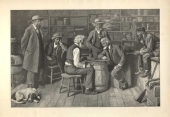The Checker Maven
The World's Most Widely Read Checkers and Draughts Publication
Bob Newell, Editor-in-Chief
Published every Saturday morning in Honolulu, Hawai`i
Noticing missing images? An explanation is here.
The Legendary Tinsley
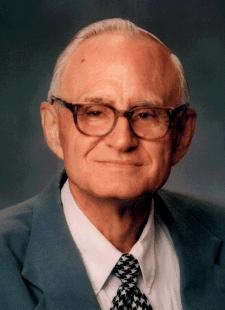
We once again have the privilege of presenting a new book by grandmaster Richard Pask. It's his exhaustive compilation of the checker career of Dr. Marion F. Tinsley, arguably the greatest checker player who ever lived, and is entitled simply The Legendary MFT.
The book is filled with games, commentary, and notes, and contains thorough indexing by opening and opponent, and much, much more, including an introduction by none other than Richard Fortman. It's simply too rich to fully describe here, so we invite you to download the book at once, by clicking here, or visiting our Richard Pask page as linked in the downloads section of the right hand column. The book is completely free thanks to the generosity of Mr. Pask.
To get you in the mood, as if that were necessary, we've chosen a situation covered in the book from the legendary Hellman-Tinsley match. This contest of titans started out with 24 draws, and then Mr. Hellman made a slip resulting in this position (having just played 17-14).
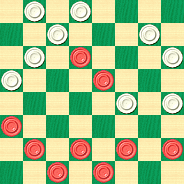
BLACK
Black to Play and Win
B:W32,31,27,25,24,21,20,14,13:B23,18,12,8,7,6,5,3,2.
You will not be surprised to know that Dr. Tinsley found the winning line of play, and drew first blood, going on to take the championship with three wins by the conclusion of the match.
Can you match wits with The Legendary Tinsley and find the winning line on your own? Can you correct Mr. Hellman's play and show how he could have held the draw?
A tall order, to be sure, but answers are just a click away; pressing Read More will bring you the entire game with annotations and comments, and, of course, the answers to our questions.![]()
We're delighted that The Checker Maven has interested and attentive readers. After publication of this article, we heard from long-time correspondent Brian Hinkle, an analyst with a keen eye for position. He consulted with Ed Gilbert, and the fruits of their collaboration may have overturned history, not to mention the results of our proposed problem. Click on Read More for the rest of the story.![]() [Read More]
[Read More]
Tombstones for Tyros

In this installment from Willie Ryan's classic Tricks Traps & Shots of the Checkerboard, Willie pulls no punches in his characterization of the lions devouring their weaker prey. Let's listen in as Willie speaks.
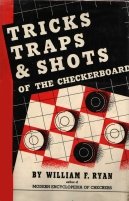
"The Cross opening is a perpetual favorite with all classes of players. For some unexplainable reason, it is infested with more early pitfalls than any other opening on the board. Here, in one concise arrangement, you will find four of the best-known and most commonly employed 'shockers' that experienced players are constantly using to slay the innocents.
| 11-15 | 23-18 |
| 8-11 | 27-23 |
| 4-8 | 23-19 |
| 9-14---A | 18-9 |
| 5-14 | 22-17 |
| 15-18 | 26-22 |
| 11-15---B,C | 17-13 |
| 7-11 | 13-9 |
| 6-13 | 24-20 |
| 15-24 | 22-6 |
| 1-10 | 28-19 |
| 11-15 | 31-26 |
| 15-24 | 26-22 |
| 13-17---D | 22-13 |
| 2-6---E. |
See the diagram.
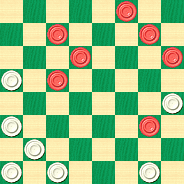
WHITE
White to Play and Win
W:W13,20,21,25,29,30,32:B3,6,8,10,12,14,24.
A---Another early demise follows 9-13, which loses as follows: 9-13, 26-23, 6-9, 30-26, 9-14, 18-9, 5-14, 32-27, 1-5, 19-16, 12-19, 23-16, 11-20, 22-17, 13-22, 25-4, and white wins.
B---If 18-23 is employed, then counter with 19-15, 10-19, 24-15, 11-18, 22-15, 14-18, 31-27, 7-10, 17-14. At this stage, 10-17, 21-14, 6-10 is drawable, but 10-19 allows the shot by 14-10, 6-15, 25-22, 18-25, 27-4, with which white wins.
C---A natural-looking move is 11-16, but it cracks up quickly by 22-15, 16-23, 31-27, 10-19, 17-10, 7-14, 27-9, 6-13, 24-15, and white wins.
D---This has been erroneously rated a losing move, but it produces a draw as shown in Note E. The accepted draw moves at this point are: 14-17, 21-7, 3-10, 22-17, 13-22, 25-18, 8-11, 29-25, 2-6, 25-22, 6-9, 22-17, 24-28, 17-13, 10-15, 13-6, 15-22, 6-2, 11-15, 2-7, 15-18, 7-10, 18-23, 10-15, 22-26. Andrew Anderson.
E---This is the real loser, since it allows the shot which follows. Black can still draw at E by playing: 14-18, 25-22, 18-25, 29-22, 8-11, 13-9 (best chance), 10-15, 9-5---F, 15-19, 5-1, 19-23, 1-5, 11-15, 5-9, 3-7, 9-13, 12-16, 20-11, 7-16, 13-17, 15-19, 22-18, 24-27; a draw. Wm. F. Ryan.
F---If 22-17 is used, follow with: 15-19, 17-13, 19-23, 9-6, 2-9, 13-6, 24-27, 6-2, 27-31, 2-6, 11-15, 6-10 (21-17, 23-26, 30-23, 31-26 ends in a draw), 3-8, 10-26, 31-22, 32-27, 8-11, 27-23, 12-16, 30-25, 22-29, 21-17; a draw. Wm. F. Ryan."
You needn't have this problem become your tombstone; avoid the hungry lions by clicking on Read More to see the short and snappy solution.![]()
With Deliberate Speed
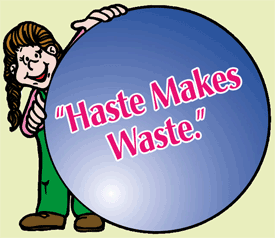
Today's speed problem is a little different; it's really not a "speed" problem per se, in that it needs to be solved in seconds. Instead, we present a problem that's a good deal harder than the usual "find the tactics" speed problem, though it really isn't so difficult as problems go.
Your challenge in this month's speed offering is to find the solution within the "regulation" five minute time limit. Are we perhaps being too easy on you? Only you can decide; try out the problem, and then click on Read More to see the solution and a sample game which leads to the problem position. Make haste slowly!
![]()
Uncle Ben's Porch: Cookies and Checkers

I had missed a Saturday morning on Uncle Ben's porch, as last weekend he hadn't been feeling very well and told me he needed his rest. It wasn't very often that he canceled our lessons, and I was worried about his health, to tell the truth about it.
So, when I got home from school yesterday, you can imagine how pleased I was to hear that Uncle Ben had called and left word with Mom that he'd be delighted to have me make my regular Saturday visit this week. Of course, Mom fussed and bothered, saying that I shouldn't annoy the kindly gentleman when he was just getting to feeling a bit better, but she relented when I said that he might be a bit disappointed if I didn't show up. Still, she insisted that I take a plate of home-baked chocolate chip cookies along with me, and warned me not to be eating them on the way over!
I skipped down the sidewalk as fast as I could, given the heaping plate of cookies I was carrying, and soon arrived at the old familiar porch. There was Uncle Ben, looking chipper and pleased, with his trademark pitcher of lemonade looking icy and inviting. The checker board was ready, too. We exchanged good-mornings and how-are-yous, and I sat down in my usual place.
"I've got some good ones for you today," Uncle Ben declared, "but don't you think we ought to have some cookies and lemonade first, to get our brains working?"

I pointed out that Mom had told me quite clearly not to eat the cookies and that they were to be saved for Uncle Ben, but Uncle Ben just winked at me and said, "You just tell your Mom that I insisted!" That was good enough for me, and we each had several cookies and a tall glass of lemonade, quietly enjoying the calm Florida morning.
"All right then, to work!" exclaimed Uncle Ben. "How would you go about winning this one?" He indicated the position on the checkerboard with a wave of his cookie-laden hand, and then he gave me that smile--- the one that always told me that this wasn't going to be easy, but that I could get the answer if I tried hard enough.
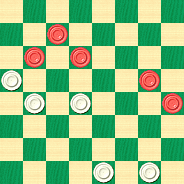
WHITE
White to Play and Win
W:W13,17,18,31,32:B6,9,10,16,20.
Uncle Ben's Porch is a fanciful and fictional characterization of the retirement years of the great checker author Ben Boland, with positions drawn from his classic Familiar Themes in the Game of Checkers. You're going to have to come up with your own cookies and lemonade, but clicking on Read More will give you the solution to this problem, a complete sample game demonstrating the theme, and a round dozen diagrammed positions and solutions based on the same motif.![]()
Three by Mac
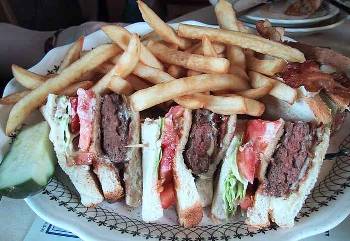
For better or worse, today's Checker School episode isn't about a three-decker cheeseburger put out by a fast food establishment. Instead, it's a triple-decker set of positions by J. B. Macindoe, a fascinating progressive endgame study.
First, try the original:
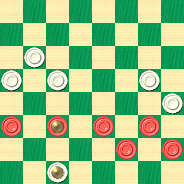
BLACK
Black to Play and Win
B:W24,20,19,17,13,K3:B12,K11,10,9,6,5.
If you are really good and you got it right, you went to this second configuration at some point:
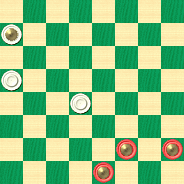
BLACK
Black to Play and Win
B:WK28,20,15:BK6,K5,K2.
And if you stayed on track (a bit easier this time), you came up with the following third situation:
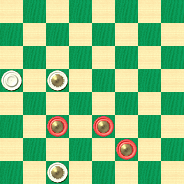
BLACK
Black to Play and Win
B:W20,K19,K3:BK11,K10,K6.
We suggest that in solving the problem, you start with the first diagram; if that's (as we expect) a tough piece of meat, try the second diagram; and if you can't slice that particular piece of cheese, see if you can shred the lettuce in the third diagram. But to digest the solutions, no secret recipes are needed; clicking on Read More will serve up the answers.![]()
Better Than First

What can be better than first? You'll know the answer when you solve this delightful miniature by R. Holding.
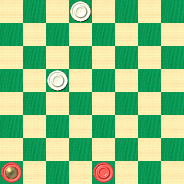
BLACK
Black to Play and Win
B:W31,19:BK4,2.
Can you finish "better than first"? Win the prize by clicking on Read More for the solution and a more detailed explanation of today's theme. (As with most miniatures, we recommend you try to "sight solve" without moving pieces on a board, as a way to develop visualization skills.)![]()
The Pied Piper's Fife
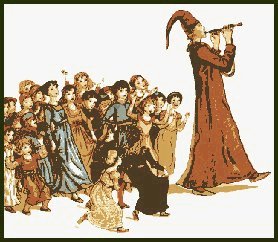
This month's installment from Willie Ryan's Tricks Traps & Shots of the Checkerboard is appropriately named; we think you'll see why when you study the problem. But as usual, we'll hear directly from the great Mr. Ryan, in his own words.

'So many innocents have been lured to destruction by this hoary variation of the Fife opening that it has been appropriately tagged "The Pied Piper's Special."
11-15 23-19 9-14 22-17 5-9---A 26-23 9-13 30-26 13-22 25-9 6-13 21-17---B 13-22 26-17 2-6 29-25, forming the diagram.
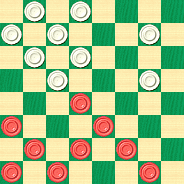
BLACK
Black to Play and Win
B:W32,31,28,27,25,24,23,19,17:B15,12,10,8,7,6,4,3,1.
A---The Fife opening, developed and first played by James Wyllie.
B---The losing move. The correct moves here are: 29-25, 8-11, 25-22, 4-8, 22-17, 13-22, 26-17, 2-6; at this point 24-20, 17-14, or 17-13 will produce a draw.'
The winning path is a bit long this time, but don't be led away by the sound of the Pied Piper's fife; clicking on Read More will break the spell and bring you Willie's solution.![]()
Different Strokes
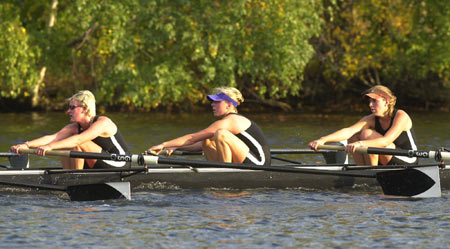
Normally, on the first Saturday of the month we present one or more "speed" problems, in which you get to race against our unforgiving Javascript clock. We're going to break the routine this month, and from time to time in the future, to present a "stroke" problem instead.
Our large and varied readership, predictably, has large and varied tastes. Some people love speed problems, while others don't; and the same is true of stroke problems, hard problems and easy problems, and on and on.
Presenting variety, and something for everyone at least from time to time, are our goals in presenting our weekly column. So, let's mix things up with a stroke problem that is without any doubt on the easier side.... after all, it's the beginning of March, and in the U.S. at least we'd best be thinking about working on income tax returns.... we do need a bit of a break from time to time.
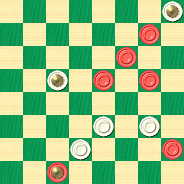
WHITE
White to Play and Win
W:WK4,K14,23,24,26:B8,11,15,16,28,K30.
By all means, don't stroke out if you can't find the solution! Instead, click on Read More for instant relief.![]()
ACF and GoldToken Sign Contract

The American Checker Federation and GoldToken have announced the signing of a contract agreement which will make GoldToken the official ACF online checker play site. Under the terms of the contract, GoldToken will provide a wide-ranging set of checker-play enhancements to their site.
GoldToken was chosen by the ACF via a rigorous competitive bidding process. Potential bidders were pre-qualified and those who passed the first screening were sent a detailed set of bid specifications. The responses were evaluated and GoldToken emerged as the top bidder. Contract negotiations proved successful and contract signing was completed a little over a week ago.
The exact contract terms and conditions contain vendor proprietary information, so we're not allowed to give all the details here. But we can tell you that GoldToken will be adding a lot of checker-related improvements and additions to their site in the coming months. Completion of this work is expected in six to twelve months, and we know we'll find the wait practically unbearable--- but definitely worth it.![]()


SQL Injection

The Checker Maven was subject to another cyberattack: our checker postcard site was mildly defaced. It seems that, unknown to us, the postcard software we use had a certain flaw which allowed a type of attack called "SQL injection." We won't bore you with all the technical details; suffice it to say that we've restored the site to normal and patched up our software to hopefully avoid such problems in the future.
More importantly, we do need to (someday!) redo our postcard site. While we think it's a great feature, it relies on the postcard recipient clicking on a link to our site to see their postcard. Unfortunately in today's world, clicking on links to sites that are unfamiliar (and we admit that not quite everyone knows about our site, at least not yet!) can be very risky. So when we redo the site, we'll provide a postcard mechanism that won't require anything more than opening your email.![]()
The Checker Maven is produced at editorial offices in Honolulu, Hawai`i, as a completely non-commercial public service from which no income is obtained or sought. Original material is Copyright © 2004-2026 Avi Gobbler Publishing. Other material is public domain, AI generated, as attributed, or licensed under CC1, CC2, CC3 or CC4. Information presented on this site is offered as-is, at no cost, and bears no express or implied warranty as to accuracy or usability. You agree that you use such information entirely at your own risk. No liabilities of any kind under any legal theory whatsoever are accepted. The Checker Maven is dedicated to the memory of Mr. Bob Newell, Sr.

